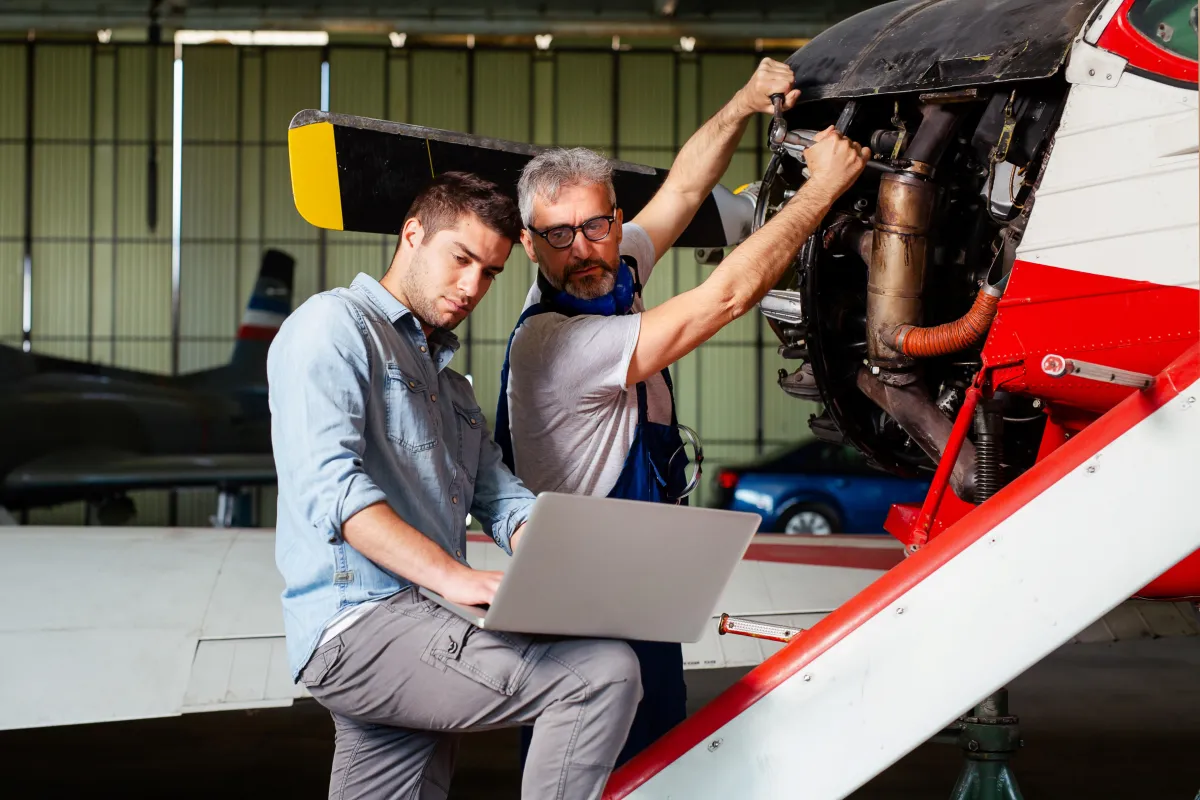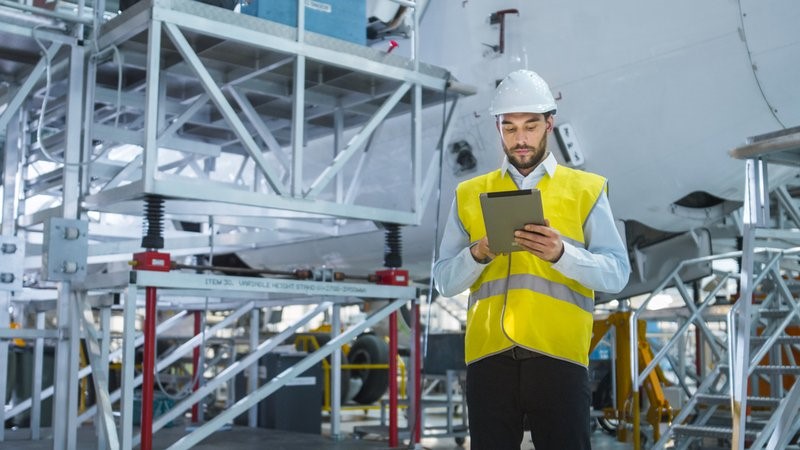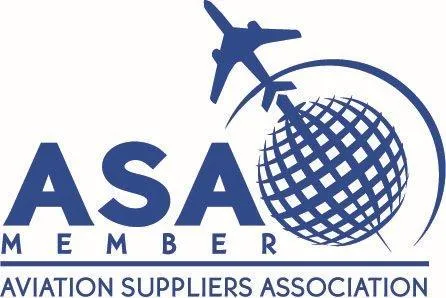
Traceability in Aviation: How Document Digitization Can Save the Industry
Aviation traceability involves the intricate, life-long recording of every step in an aircraft component's lifespan. The process promotes transparency and accountability, ensuring every part is accounted for and verified. Critical systems have largely remained unchanged for decades within the industry because the industry has not adopted newer technology, and fraudulent parts can still enter the supply chain. This was evident in the AOG Technics scandal of 2023. Owners currently face significant challenges in documenting and managing aircraft maintenance effectively. The industry continues to lag significantly in document digitization, proving detrimental to its own progress.
Traceability follows a part from its origin and manufacturing to its installation, ongoing maintenance, and eventual retirement. Maintaining an extensive paper trail creates substantial administrative burdens. Paper-based processes incur high costs for printing, shipping, and storage.
Other persistent problems include inaccurate, incomplete, and missing records, causing considerable delays. Slow processing times contribute to a high propensity for error across operations. Every issue translates into significant financial losses for the aviation sector.
Implementing a real solution has become absolutely imperative. An exploration of how comprehensive document digitization can fundamentally transform traceability is essential. Modern digital solutions promise to save the aviation industry millions of dollars annually.
Understanding Document Digitization in Aviation
Document digitization involves converting physical information into accessible digital formats. Within aircraft maintenance, embracing various technologies and integrated systems is key. Digital record-keeping and advanced predictive analytics represent significant advancements. Achieving incremental improvements is not the sole objective.

Digital transformation proves absolutely essential for ensuring safety, survival, and competitiveness within the aviation industry. Many operators hold incorrect assumptions regarding documentation digitation processes. Operators often believe digitization merely involves creating electronic copies of existing paper records. Placing non-compliant PDF images on a computer system creates numerous issues.
Such a misconception burdens staff with extra workload, exacerbating existing laborious and inaccurate processes. Reprinting electronic images requires a licensed A&P technician for verification. The technician must confirm and certify their identical nature to the original paper record. Failure to match electronic images with paper entries risks violating FAR 43.12.
Violations can lead to license suspension, substantial fines, and potential imprisonment. Operators must guarantee accurate duplication of every paper record into an electronic image. Verifying inclusion of all images in the aircraft’s e-log repository is also necessary. Failure to do so prevents certainty that the electronic repository fully backs up vital records.
Advanced Technologies for Digitization
Preventing errors from persisting and amplifying over time requires a high level of fidelity to information. Technology significantly assists owners in adhering to essential data exchange standards. Pertinent standards relate to aircraft maintenance statuses, such as ATA Spec 2500. Implementing advanced tools becomes crucial for maintaining integrity.
Barcodes and radio-frequency identification (RFID) technology offer precise tracking of individual parts and components. Tracking occurs across the entire aviation supply chain, enhancing oversight. Dedicated software systems then store, organize, and manage electronic documents. Such systems streamline information retrieval and tracking processes, improving efficiency.
Cloud-based solutions provide scalability and accessibility required for managing large volumes of digitized documents from any location. Blockchain technology offers a secure and transparent method for recording transactions. It effectively tracks the provenance of parts, ensuring authenticity. Analytical tools further extract valuable insights from comprehensive document digitization.
These tools identify critical trends in maintenance data or predict potential component failures. Leveraging these powerful technologies allows the aviation industry to achieve more accurate, efficient, and secure traceability processes. Operators gain enhanced control and foresight, minimizing risks.
Addressing the Urgent Need for Improved Traceability
Fraud presents a common threat in the aviation industry due to the prevalence of counterfeit parts. The complex nature of supplier networks makes detecting fraudulent parts challenging. Counterfeits frequently enter the supply chain undetected. In mid-2023, the aviation industry confronted a major crisis.
Inspectors discovered parts falsely represented as new via fraudulent paper certificates; they were actually used. Questionable titanium has also made its way onto Boeing and Airbus planes, causing widespread concern. Beyond regulatory issues, a lack of clear visibility can conceal serious quality problems. Unseen risks then pose significant threats to aircraft safety post-production.
Effective traceability ensures the complete history of each aircraft part remains discoverable. Capabilities allow for timely maintenance and necessary replacements, preventing failures that could compromise safety. Knowing each part’s history also streamlines maintenance workflows, significantly reducing downtime. It optimizes inventory management, leading to greater operational efficiency.
Paper documentation and paper documents that have been scanned without analysis carry an inherently high risk of falsification. Therefore, document digitization becomes absolutely essential for improving parts traceability and preventing widespread crises. The implementation process, however, still presents notable challenges.
Older aircraft often possess paper-based records, proving difficult to digitize and integrate with modern traceability systems. Aircraft parts also typically pass through numerous suppliers and manufacturers globally. A highly complex supply chain complicates tracking component origins and comprehensive maintenance history. Data security and interoperability remain significant concerns for operators.
Different stakeholders within the aviation industry frequently utilize disparate traceability systems. For document digitization to function effectively, these systems must communicate safely and share data efficiently. Industry-wide alignment to identical or at least comparable standards is necessary. Addressing these challenges is vital for maintaining a robust and reliable traceability system.
Why Document Digitization Is Crucial Now
In the early 1980s, aircraft operating leases accounted for a mere 1.7% of the global market. The industry has transformed dramatically since then. Leased aircraft now comprise a substantial 49% of the total commercial fleet and is expected to grow. The global aircraft leasing market size is projected to reach $94.36 billion in 2025.
Experts forecast market growth at a compound annual growth rate (CAGR) of 7.20%, reaching $133.55 billion by 2030. Noteworthy growth statistics indicate airlines see high value in aircraft leasing. Leasing operations, however, demand extremely detailed, laborious, and time-consuming procedures for documentation.
Aircraft lessors must substantiate their asset value with absolute certainty for every transaction. Back-to-birth traceability (BtB) for life-limited parts (LLP) involves meticulously tracking and recording the complete operational lifespan of each specific part. Lessees often use their maintenance software to note the total time of each LLP. Aircraft lessors generally require more thorough documentation from lessees.
Lessors demand clear evidence of every stage in the LLP’s life. Precise time consumed in flight hours and flight cycles must be included. According to AviTrader's 2024 analysis, poor records management can result in airlines facing up to an additional $4 million in unbudgeted cash out per aircraft during transitions. Penalties for late delivery, non-compliance, and additional maintenance costs represent around 44% of unplanned expenses.
The Value of Document Digitization
Document digitization and automated record keeping offer transformative potential for the aviation industry. They provide substantial value increases across operations. Operators can save an estimated $5,000 per aircraft by eliminating paper documentation for maintenance records. Document digitization also saves thousands of valuable work hours and significantly reduces labor costs.

The process even contributes to lower fuel consumption, enhancing efficiency. The global push for sustainability exerts pressure on all industries to lower their carbon footprint. Operators achieve objectives by reducing reliance on paper-based processes. They also conserve natural resources and minimize waste generation, promoting environmental responsibility.
Less paper improves safety compliance, eliminating the need for physical document storage space. Operations are streamlined and accessibility is enhanced. United Airlines once saved 170,000 gallons of fuel annually by cutting just one ounce from its inflight magazine. Printing on lighter paper achieved significant results.
Given the airline operates 4,500 flights daily, every ounce contributes to approximately $290,000 in annual fuel savings. Consider the profound impact digitizing an entire operating manual could have on similar savings. Executive Jet Management (EJM) implemented e-signatures, leading to monumental savings. A standard work order typically spans around 200 pages.
Resolving the Crisis Through Proper Document Digitization
Automation and efficiency represent essential components of modern business practices. Advanced technologies enable faster communication and seamless information sharing. They simultaneously reduce the likelihood of human errors across all stages. Document digitization offers strategic value propositions specifically tailored for the aviation industry.
These include improved integration among engineering, maintenance, and operations functions. Real-time reporting and precise tracking of aircraft performance become possible. Instantaneous record-keeping and continuous airworthiness monitoring enhance safety. Operators gain greater visibility into maintenance tasks and their progress.
Enhanced data accuracy and completeness facilitate better decision-making capabilities. Automated systems minimize errors and inconsistencies in stored information. They achieve objectives by eliminating the need for duplicate data entry. Inputting data is streamlined to occur only once, significantly enhancing accuracy and decreasing labor-intensive administrative tasks.
Automation streamlines critical processes such as collecting necessary signatures and ensuring timely review and approval. These features together maintain accurate records and safeguard asset value effectively. A centralized automated record-keeping system provides executives with improved visibility into pilot records. Searchable platforms enable easy retrieval and monitoring of individual components, records, projects, process oversight, and worker actions.
Unlock the Potential of Your Data With Document Digitization
Aircraft lessors rely heavily on precise historical data for their business operations. Managing consistent and comprehensive documentation from various parties involved in aircraft operations and maintenance often proves difficult. Complexities frequently lead to expensive and avoidable delays. Proper document digitization eliminates these hurdles.
ProvenAir makes data capture and processing easier and much more efficient for aviation professionals. The platform creates reliable trace insights for commercial landing gear and other life-limited parts. Our system employs proprietary algorithms and advanced AI to analyze maintenance records. It accurately interprets LLP usage and generates detailed exception reports and trace timelines for landing gear, engines, and APUs.
The ProvenAir platform has already found over 10,000 human errors in documentation and also quickly identifies critical gaps in full back-to-birth traceability. It can generate real-time reports for any assembly, sub-assembly, or individual LLP with unparalleled speed. Improving record keeping and driving more value from your operational data saves significant hours and substantial dollars. Get in touch today to discuss a digital transition for your operation and elevate your efficiency.


